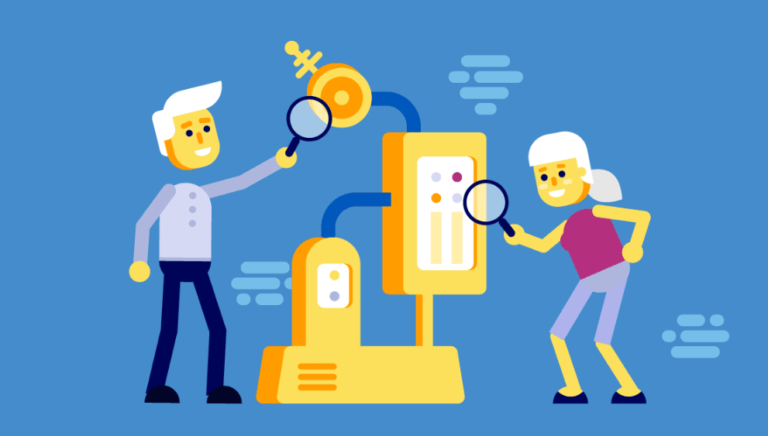Ensuring customers have a positive UX with your product is essential for any business to succeed. The key to achieving this is UX optimization, which can help you deliver a better user experience and keep customers returning for more. This blog discusses how vital UX optimization is and outlines four steps businesses can take to provide the best UX possible. With these tips, companies can increase customer engagement and satisfaction while ensuring their product or service meets the needs of their users.
Introduction to UX Optimization
Optimizing user experience is crucial for any business. It involves understanding user needs, testing, analyzing, and repeating the process regularly. Three key areas to focus on are usability, visuals/branding, and functionality/usability. Automating mobile testing helps ensure that products work well on all devices. Analytics are essential for understanding what needs improvement. By following these steps, businesses can provide the best possible experience and increase customer satisfaction.
Why is User Experience Testing Important?
- End user experience testing is critical to product or service development. It provides businesses valuable data about customer preferences and needs, enabling them to tailor their offerings to meet these requirements.
- This aspect, in turn, leads to the delivery of high-quality user experiences that build trust with customers.
- Additionally, UX testing provides organizations with insights into customer interactions with their products or services, highlighting areas for improvement and helping them create enjoyable experiences.
- UX testing is beneficial for making data-driven improvements promptly.
- By leveraging quantifiable data, businesses can make informed decisions about changes that will benefit their users rather than making changes based on intuition alone.
- This approach leads to better customer engagement and satisfaction over time and helps businesses maintain a competitive edge in the digital landscape.
While these six points cover only a few benefits of user experience testing, it highlights the importance of delivering good UX. These four steps will help you:
4 Steps to deliver a better UX
Step 1: Understand your users
Understanding and catering to user needs and preferences is vital to delivering an exceptional user experience. Businesses must follow a systematic approach to accomplish this, which includes gathering customer feedback, creating user personas, researching competitor products, and developing a UX strategy that caters to the requirements of their target audience. By adhering to these procedures, companies can ensure that their products or services are tailored to their users, resulting in a satisfying experience for them.
Step 2: Implement end-user experience testing
Optimizing user experience (UX) is crucial for businesses; testing is a critical step in achieving this. Testing provides valuable insights into customer preferences and needs while identifying areas that require improvement. By implementing end-user experience testing, businesses can ensure they provide the best possible UX for their customers.
Creating an effective testing plan involves defining the objectives of the test; this means identifying what you want to learn from the test and what problems must be solved. Businesses can achieve better results by focusing on specific areas during testing and analysis. Once you’ve defined your objectives, you can create tests.
User experience tests typically involve:
- gathering feedback from users.
- analyzing data gathered from these tests.
- making improvements based on that data.
It is essential to obtain feedback from diverse users to ensure accurate results. Asking questions about how users interact with different parts of a product or service can help pinpoint areas needing improvement.
After collecting data, it is time to analyze it and make changes accordingly. Look for patterns or trends in user behavior or preferences and use this information to make informed decisions about how best to improve UX. Businesses need to validate changes by conducting additional rounds of user experience testing to ensure they meet customer expectations and deliver on promises.
Step 3: Automate mobile testing for UI optimization
Ensuring a great UX across multiple devices is essential in the modern digital landscape. Businesses must utilize automated mobile tests to optimize Ui testing to achieve this. Doing so allows developers to quickly identify potential issues with an app’s UI and accurately while saving money on manual testing processes.
The first step in automating mobile testing is determining which app elements require testing on different devices or browsers; this includes checking for features specific to certain platforms, such as the ability to upload images from a camera roll on iOS or Android phones. Test any special features or animations specific to certain browsers.
Integrating automated tests into the existing process is the next step after identifying which components you need to test on what platform. By using automated tests, businesses can minimize the time and cost associated with manual testing by identifying UI flaws across various devices without manually going through each test case. This results in better customer experiences delivered more efficiently while staying up-to-date with current technologies.
Step 4: Analyze, optimize, and repeat
Evaluating the effectiveness of UX optimization is crucial for businesses striving to enhance user experience. The evaluation examines KPIs like customer satisfaction scores, customer retention rates, website traffic, and conversion rates to determine optimization effort success. Consistently assessing these metrics enables businesses to pinpoint areas for improvement and make necessary adjustments.
Businesses should identify areas for improvement and implement design modifications and usability, accessibility, and outcome testing. A/B testing determines which design elements work best with users and ensures that the final product caters to its intended audience. Furthermore, continuous performance monitoring is essential to detect further tweaks that need to be made to enhance the user experience.
Finally, companies should refine their optimization process and repeat the cycle until they are confident they are offering the best possible user experience; this may involve adding new features or testing alternative designs. Employing an iterative approach is essential to providing engaging experiences that cater to customer needs and increase satisfaction and engagement. Following these steps will enable businesses to deliver a superior user experience that resonates with users and fosters long-term engagement and satisfaction.
Conclusion
The key to a successful UX optimization strategy is to understand customer needs and then use the four steps outlined in this article, such as end-user experience testing and mobile automation testing for UI optimization – this will help businesses identify the areas that need improvement and make the necessary adjustments to ensure their product meets users’ needs.
Companies can also leverage tools like HeadSpin that allow users to benefit from AI tools. HeadSpin’s AI provides actionable insights that help address issues quickly and improve your mobile app testing. Ultimately, by continually optimizing their UX, companies can provide an excellent user experience that will drive customer engagement and satisfaction.






